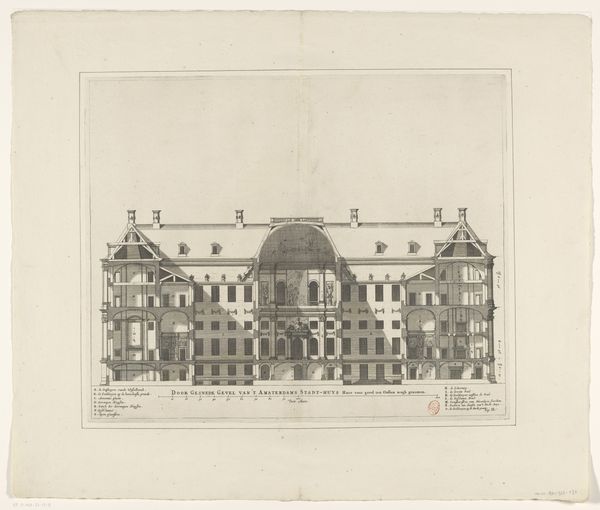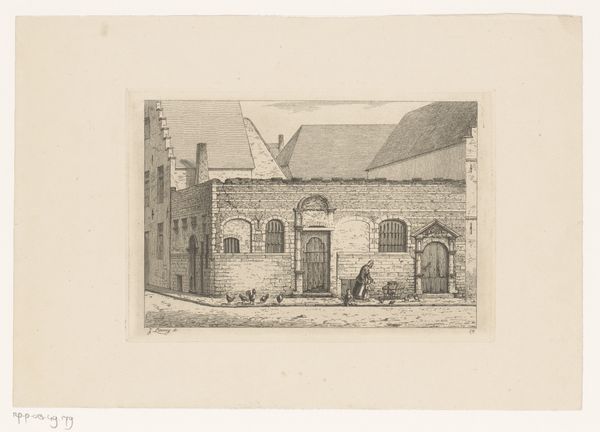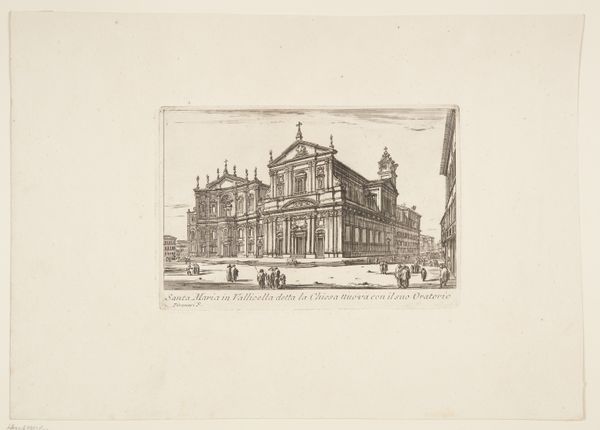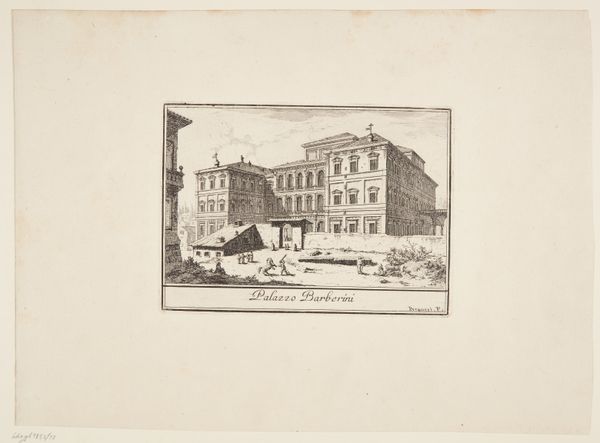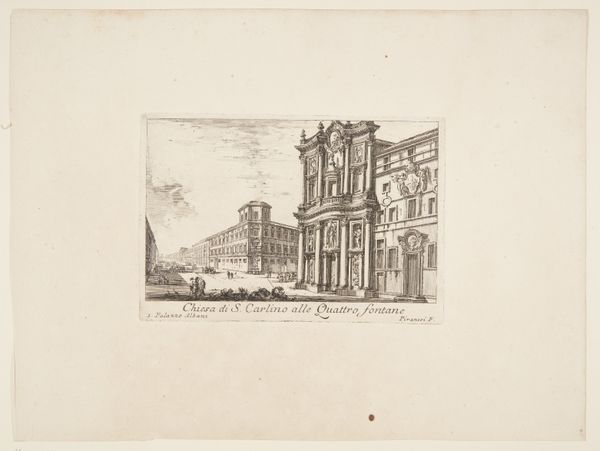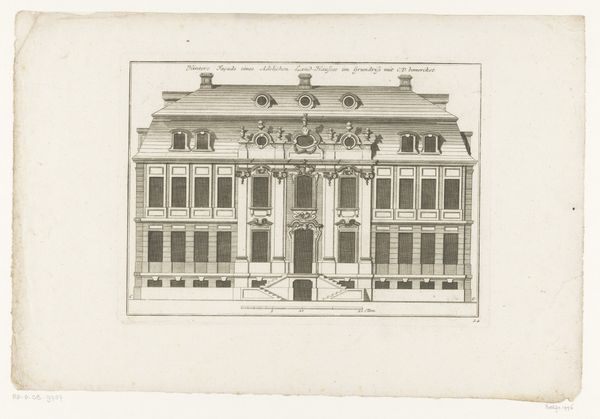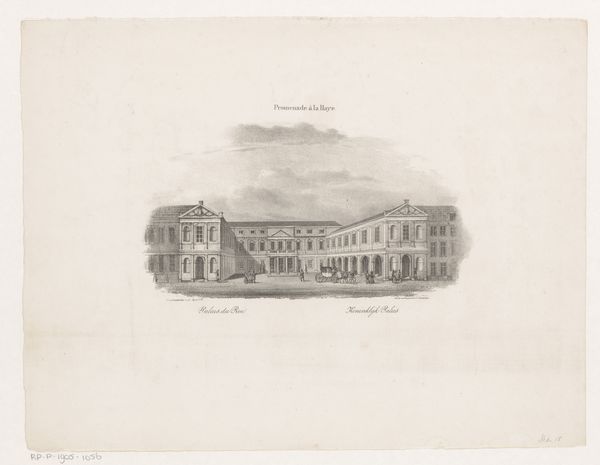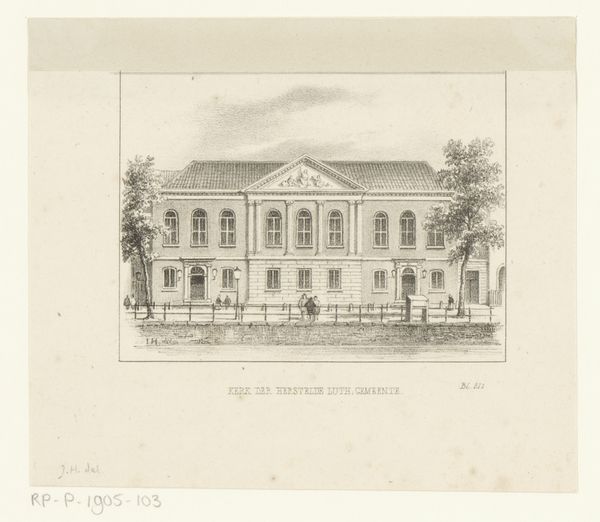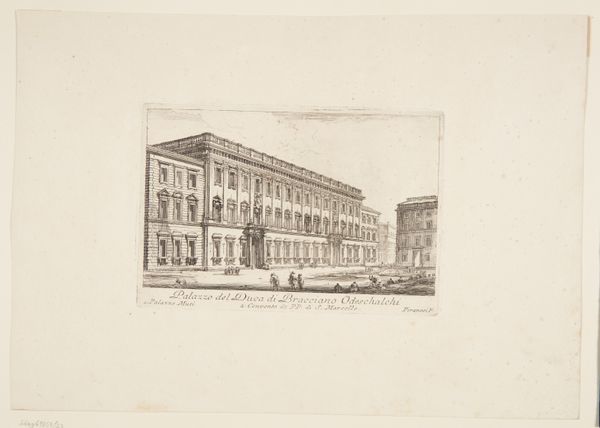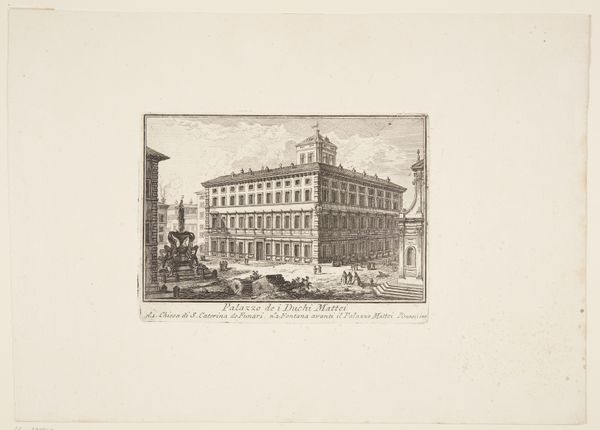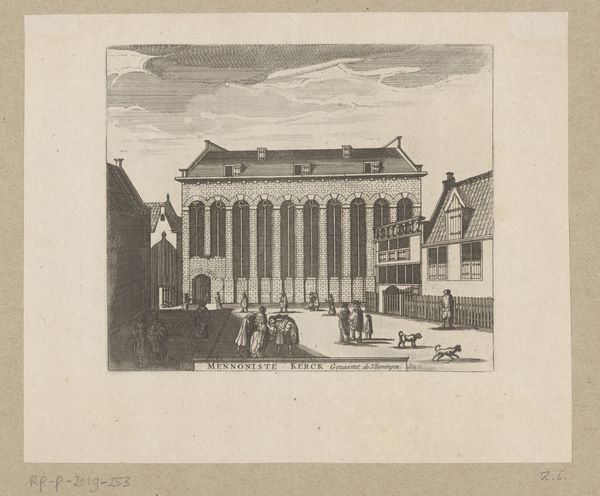
drawing, print, etching, architecture
#
drawing
# print
#
etching
#
etching
#
geometric
#
architecture
#
realism
#
building
Dimensions: height 122 mm, width 187 mm
Copyright: Rijks Museum: Open Domain
Editor: So, this is Jean Théodore Joseph Linnig’s “Gezicht op het huis van Frans Floris,” an etching from 1868. I'm immediately drawn to its meticulous detail; it feels almost like an architectural blueprint, yet with an artistic touch. It is so perfectly frontal and symmetric. What can you tell me about the cultural significance of depicting architecture in this manner? Curator: Well, it's interesting you point out the symmetry. In the 19th century, there was a rise in interest in preserving and documenting architectural heritage. Etchings like this one played a crucial role, serving as both historical records and cultural symbols. The “house of Frans Floris” wasn’t just any building; it represented a significant artistic legacy, and portraying it became a way to claim cultural descent from the artistic glory of the past. It projects social class, but the geometric order makes it look official and neutral at the same time. What is your impression of the human presence in the picture? Editor: They appear rather small and almost secondary to the structure itself. Perhaps their presence emphasizes the scale and grandeur of the house? Curator: Exactly! Think about the role of the museum in that same era. Were museums not also promoting and emphasizing grandeur? Linnig positions architecture here as an element of civic pride and an accessible claim to cultural memory. It's also about making art accessible through prints, shifting it away from exclusive patronage. So the architectural detail works hand in hand with making a point of view available to a large audience. Editor: That makes so much sense. It’s like Linnig democratized access to art through this detailed rendering of architectural history. I now see beyond just an image of a building; it’s a commentary on the evolving role of art and its relationship to the public sphere. Thank you! Curator: My pleasure! It's always enriching to explore how historical context informs artistic expression.
Comments
No comments
Be the first to comment and join the conversation on the ultimate creative platform.
